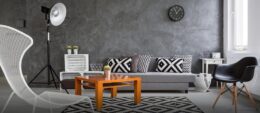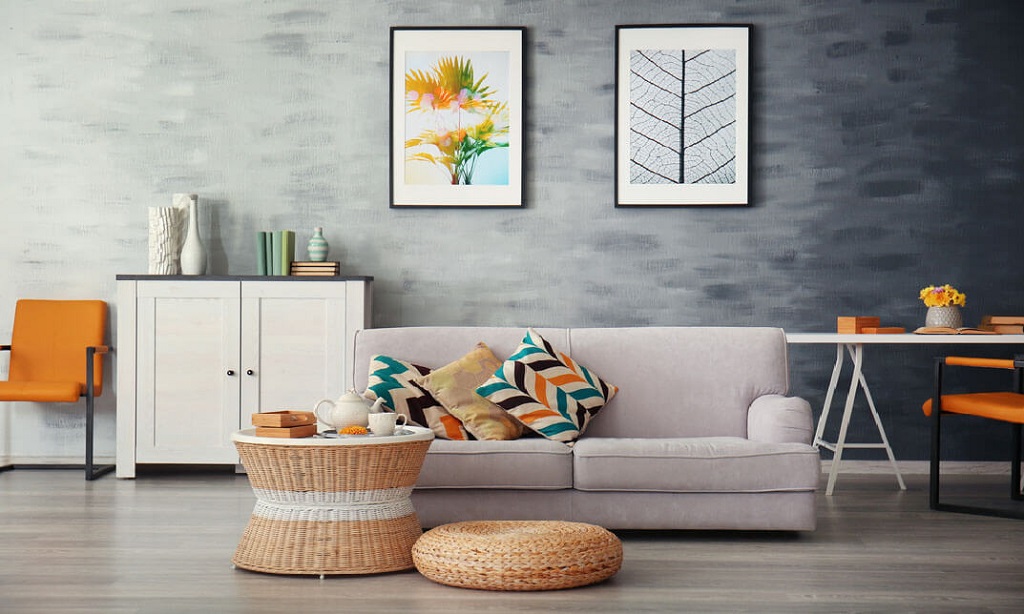As humans, we spend a significant amount of time in indoor spaces. Whether it’s our homes, offices, or public places like restaurants and malls, the interior design of these spaces plays an important role in how we feel and behave. The 7 elements of interior design are the key components that make up a well-designed space. They include space, form, line, texture, color, light, and pattern. In this article, we will dive deeper into each element and understand their significance in creating a functional and aesthetically pleasing interior.
Space
Space is the most fundamental element of interior design. Now, imagine you’re working on a low budget modern 3 bedroom house design. The space available to you within this house is your playground. You can fill it with furniture, leave some areas empty to give a sense of openness, or use intelligent storage solutions to make the most of it. The way you navigate the space contributes significantly to the functionality and flow of the design. Think of it as piecing together a puzzle; every component should fit perfectly within the space, without feeling cramped or sparse.
There are two types of space in interior design – positive space and negative space. Positive space is the area occupied by objects, while negative space is the empty or unused area. A well-designed room strikes a balance between these two spaces for an overall pleasing look.
Form
Form refers to the shape and structure of objects within a space. It can be 2-dimensional (length and width) or 3-dimensional (length, width, and depth). In interior design, form is important as it determines the visual weight of an object and its relationship to other objects in the space.
Forms can be geometric or organic. Geometric forms have clean lines and sharp edges, while organic forms are natural and irregular in shape. A good interior designer knows how to use different forms to create an interesting and harmonious space.
Line
Line is a powerful tool in interior design, used to define, divide, and guide the eye throughout a space. There are three types of lines – horizontal, vertical, and dynamic (curved). Each type of line evokes a different feeling and can be used to create a specific mood in a space.
Horizontal lines give a sense of stability and calmness, while vertical lines add height and strength. Dynamic lines, on the other hand, are more fluid and can add movement and energy to a space. A skilled interior designer knows how to use these lines effectively to enhance the overall design.
Texture
Texture refers to the surface quality of objects in a space. It can be visual or tactile, meaning it can be seen or felt. Texture adds depth and interest to a space and can greatly impact its atmosphere.
There are two types of texture – rough and smooth. Rough textures like brick walls or exposed wood beams give a sense of warmth and coziness, while smooth textures like marble floors or glossy cabinets give a more formal and sophisticated feel. A balanced mix of textures can create a visually appealing interior.
Color
Color is perhaps the most powerful element of interior design. It has the ability to evoke emotions, influence moods, and even affect our physiological reactions. Color theory is an important aspect of interior design, as different colors have different meanings and associations.
Warm colors like red, orange, and yellow can create a cozy and inviting atmosphere, while cool colors like blue, green, and purple can promote a calming and relaxing environment. The right combination of colors can make a space feel balanced and cohesive.
Light
Light is crucial in interior design as it not only provides visibility but also sets the mood for a space. Natural light is ideal, but artificial lighting can also play a significant role in enhancing the design of a space.
There are three types of lighting – ambient, task, and accent. Ambient lighting sets the overall mood of a space, task lighting is focused on specific areas for better functionality, and accent lighting highlights particular objects or areas to create visual interest.
Pattern
Pattern refers to the repetition of shapes, colors, or textures in a space. It can add visual interest and create a cohesive look. However, too much pattern can be overwhelming and chaotic.
Patterns should be used sparingly and intentionally. They can be subtle, like the texture on a wall or bold, like a statement wallpaper. A skilled interior designer knows how to incorporate patterns effectively without overpowering the entire design.
In conclusion, the 7 elements of interior design – space, form, line, texture, color, light, and pattern – are essential in creating a functional and visually appealing space. A skilled interior designer knows how to utilize these elements effectively to transform any room into a beautifully designed space that reflects the personality and style of its inhabitants. So, whether you are designing your own home or seeking professional help, keep these elements in mind for a successful interior design project that will leave a lasting impression.
FAQs
What is the role of interior design in our daily lives?
Interior design plays a significant role in creating functional and aesthetically pleasing indoor spaces where we spend a majority of our time.
Can anyone become an interior designer?
Yes, anyone with a passion for creativity and design can become an interior designer. However, formal education and training are highly recommended to gain the necessary knowledge and skills.
How do I choose the right color for my space?
Consider the purpose of the room and the mood you want to create. Warm colors are suitable for spaces where you want to promote energy and socialization, while cool colors are ideal for relaxation and calmness.
Can interior design impact mental health?
Yes, interior design has a significant impact on our mental well-being. A well-designed space can promote positive emotions and decrease stress levels.
What are some common mistakes to avoid in interior design?
Some common mistakes to avoid include not considering the functionality of a space, using too many patterns or colors, and neglecting proper lighting. It is best to consult with a professional interior designer to avoid these mistakes and achieve a well-designed space.



